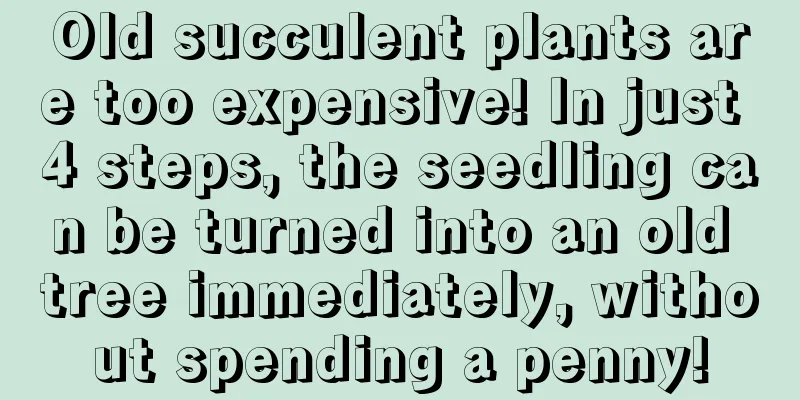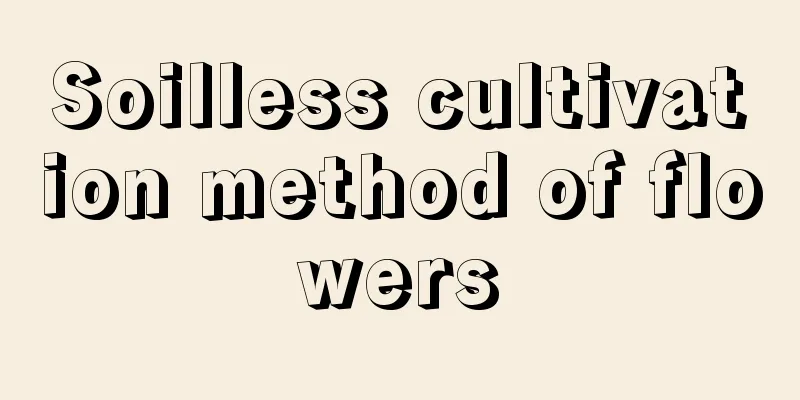Carrot transplanting precautions and key points of carrot cultivation methods and techniques

|
The carrot seedling period is relatively long, generally 20-25 days. When there is a shortage of seedlings or very few seeds, the method of seedling transplanting or seedling separation transplanting will be chosen to expand the nutritional area and avoid overcrowding, thereby improving the quality and yield of carrots. The time period for transplanting carrot seedlings is before the seedlings grow 3-4 true leaves. The smaller the seedlings, the less likely they are to be damaged by the roots. The higher the survival rate after transplanting, and the lower the rate of fleshy root deformity. Key points for transplanting carrots1. Be careful when transplanting carrots, because their seedlings are relatively fragile. If you pull them out directly with your hands, the seedlings will easily be torn off. Therefore, you need to moisten the soil before transplanting, then use a small shovel to loosen the soil, and then slowly pull out the seedlings. 2. Take out as much soil as possible with the seedlings so that they can adapt to the new environment faster. If multiple seedlings are gathered together, separate them gently to prevent them from gathering together and affecting the expansion of the fleshy roots and increasing their density. 3. When transplanting carrots, you need to choose soil with high organic content and good drainage. You need to turn the soil over when transplanting to increase the looseness and air permeability of the soil, and then gently transplant the seedlings into the soil. Carrot transplanting management1. Provide moisture After transplanting, the carrots need to be watered, but watering needs to be done when the soil is dry. Just keep the soil moist. Too much watering will affect the growth of carrots and cause water accumulation in the plants. 2. Provide nutrients After the carrots are successfully transplanted, they need a lot of nutrients, so they need to be fertilized at this time. It is best to use nitrogen, phosphorus and potassium compound fertilizer so that the carrots can absorb sufficient nutrients and increase their growth rate. |
<<: Five-needle pine seed germination method How to sow seeds and germinate quickly
Recommend
How to grow asparagus fern
1. Breeding environment 1. Soil: To grow asparagu...
How to grow rough rib grass?
How to grow rough rib grass? temperature Rough-ri...
Blueberry planting method, blueberry pictures
1. Planting method 1. Time selection: If you want...
Why can't you grow peonies at home?
1. Inconvenient breeding The root system of peony...
What is the best fertilizer for Yalezhiwu
Fertilization time of Yalezhiwu When repotting or...
Where is Morchella suitable for growth? What are the growth environment requirements?
Where do Morels grow? Morchella is suitable for g...
Cultivation methods and precautions for potted camellia
1. Breeding methods 1. Flower soil: Camellia does...
Snow lotus growth environment conditions and characteristics
Snow lotus growth environment conditions and requ...
Keep these 3 kinds of flowers at home, they are easy to grow and beautiful, and you will never have the same flowers as others
Huahua understands everyone's thinking. Just ...
How to grow hydroponic succulents
Hydroponic succulents are a special form of soill...
How often should you water a cactus in summer?
How often to water cactus in summer Cactus is not...
How often should I water water spinach?
How often should I water water spinach? Generally...
How can the dead green radish be resurrected?
1. Check the roots After the green radish is froz...
Cultivation methods and precautions of Artemisia selengensis
Growth habits of Artemisia strychnifolia The bran...
How to propagate Vinca
Vinca vine propagation method: seed propagation V...









